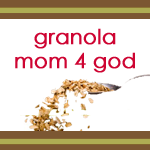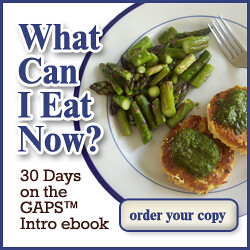TV ads may lead you to believe that you HAVE to have paper towels on your kitchen counter to pick up spills in your household. They even show paper towels being used, reused, washed in the sink and used again. Isn't that what a washcloth does?
So I say, save some money and room in the landfill and go cloth in the kitchen (and on bottoms--butt that is for another post). The first step is to go to your local store, be it Wal-Mart, Target, Kmart, Big Lots, etc. In my Granola Mom Organic Store, through Amazon, I have some rags priced at $8.48 for a set of eight. At Target, you can get a set of 4 for $2.99. These basic rags come in pretty colors or your basic white. Buy about 30 or so, depending on how many are in your family. I try and have enough cloths so that I am washing them every three to four days.
I have a basket filled with clean rags above my kitchen sink, right next to my precarious, barely used, paper towels that our visitors frequently gravitate to.
So I say, save some money and room in the landfill and go cloth in the kitchen (and on bottoms--butt that is for another post). The first step is to go to your local store, be it Wal-Mart, Target, Kmart, Big Lots, etc. In my Granola Mom Organic Store, through Amazon, I have some rags priced at $8.48 for a set of eight. At Target, you can get a set of 4 for $2.99. These basic rags come in pretty colors or your basic white. Buy about 30 or so, depending on how many are in your family. I try and have enough cloths so that I am washing them every three to four days.

I have a basket filled with clean rags above my kitchen sink, right next to my precarious, barely used, paper towels that our visitors frequently gravitate to.
Are your paper towels on a stand like mine? Ever have the stand fall due to the clumsy ripping of the paper towel by your one available hand--only to create an even bigger mess as you yank the paper towel to free it from its roll. You then knock over your glass of water, which then spills all over your child's important paper? No more!
When a spill comes or a face needs to be wiped, bypass the paper towels and unfold your cloth with a dramatic snap of the wrist. All you need is one hand to pick the cloth out of the basket and it is ready to go. Use water or keep it dry. Cloth is far more absorbent than paper and doesn't become slimy when wet. It will grip boogers, swallow avocado, suck up tomato sauce, tackle dog barf, and soak up colossal milk spills! You can even wash it in the sink and reuse it--just like a paper towel, but cheaper and better for the earth!
When I am finished using my cloth, I often hang it on my oven handle to dry. This way, if I am slow to wash the laundry, the cloth won't grow mold in the basket. When the cloth is dry--in a few hours, I just throw it in a basket that sits on a bar stool at the kitchen counter. You could also store the dirty basket on top of your refrigerator, in the pantry, or under the sink.
finished using my cloth, I often hang it on my oven handle to dry. This way, if I am slow to wash the laundry, the cloth won't grow mold in the basket. When the cloth is dry--in a few hours, I just throw it in a basket that sits on a bar stool at the kitchen counter. You could also store the dirty basket on top of your refrigerator, in the pantry, or under the sink.
When I am
 finished using my cloth, I often hang it on my oven handle to dry. This way, if I am slow to wash the laundry, the cloth won't grow mold in the basket. When the cloth is dry--in a few hours, I just throw it in a basket that sits on a bar stool at the kitchen counter. You could also store the dirty basket on top of your refrigerator, in the pantry, or under the sink.
finished using my cloth, I often hang it on my oven handle to dry. This way, if I am slow to wash the laundry, the cloth won't grow mold in the basket. When the cloth is dry--in a few hours, I just throw it in a basket that sits on a bar stool at the kitchen counter. You could also store the dirty basket on top of your refrigerator, in the pantry, or under the sink. Note, if you use wash cloths for messes, why not go ahead and use cloth napkins! Think about the money you will save!
OK. . . a 12 pack of Scott paper towels is $31.25 , on Amazon. So each roll is $2.60. (Yikes! I honestly have no idea how many rolls a normal household goes through in a month, but I am going to guess 8 rolls per month? Please post a comment and let me know.) That comes to a total of 96 rolls a year. Twelve rolls are in a pack, so you would need 9 packs at $31.25, which comes to a grand total of $281.25 per year. And that is then multiplied by every year that you live (minus the nursing home years). But if you went to Target and bought eight packs of wash cloths (32 wash cloths) for $2.99, you would spend $23.92 and these wash cloths will last several years! It seems obvious which is better for the budget. Now do the math if you switched from paper napkins to cloth!
But you say, then I have to wash it and pay money for laundry detergent. Well, I have an answer for you. Make your own laundry detergent!
But you say, then I have to wash it and pay money for laundry detergent. Well, I have an answer for you. Make your own laundry detergent!

 I came upon this recipe through the food buying coop that I belong to, so I cannot take the credit for how easy and yummy it is. Before I began grinding my own wheat berries, I made this recipe with store bought wheat flour. Whether you grind your wheat berries or use store wheat flour, this is a cheap method to making wholesome bread. I used to pay at least $3.50, sometimes $4.00 for organic wheat bread, and it still contained lethicin, sugar, and other fillers! But now I can make wholesome bread right at home, even while we are doing school!
I came upon this recipe through the food buying coop that I belong to, so I cannot take the credit for how easy and yummy it is. Before I began grinding my own wheat berries, I made this recipe with store bought wheat flour. Whether you grind your wheat berries or use store wheat flour, this is a cheap method to making wholesome bread. I used to pay at least $3.50, sometimes $4.00 for organic wheat bread, and it still contained lethicin, sugar, and other fillers! But now I can make wholesome bread right at home, even while we are doing school!














